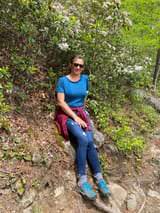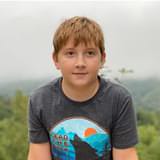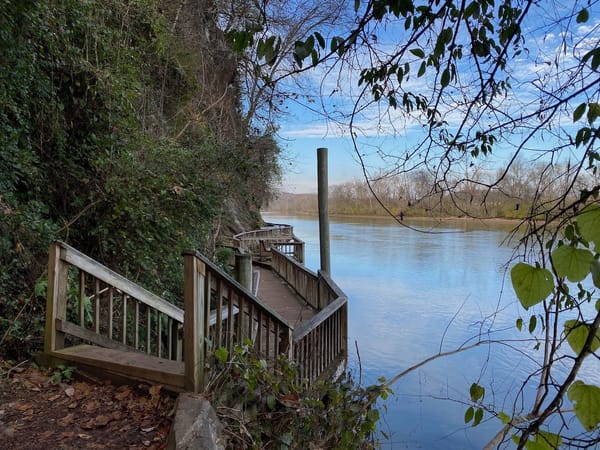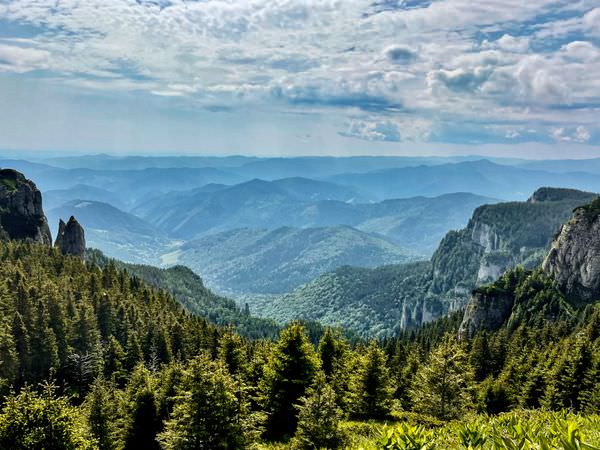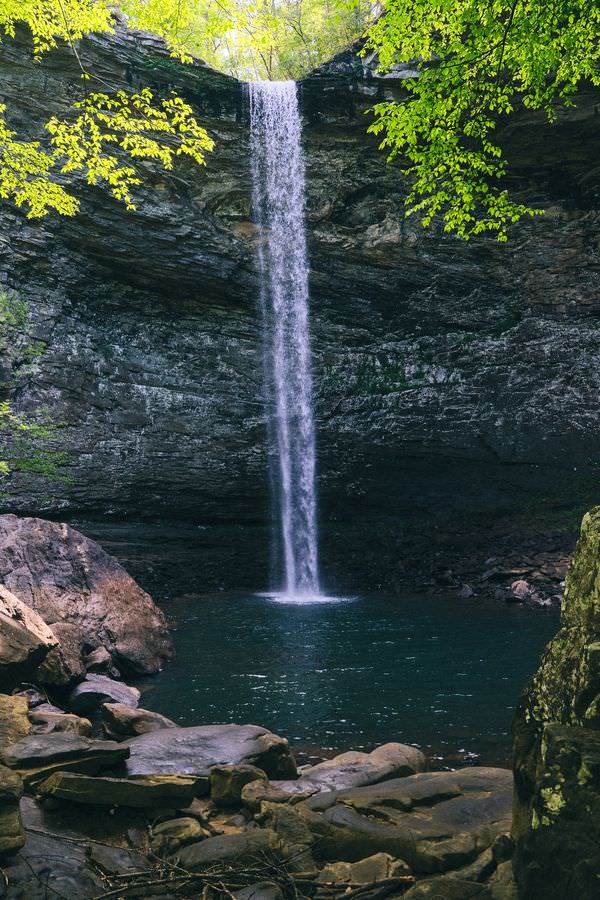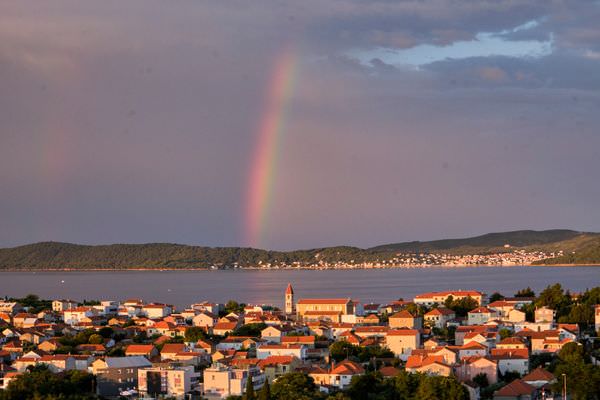Death Valley National Park
Anna and her sons tell of their experience of Death Valley National Park.
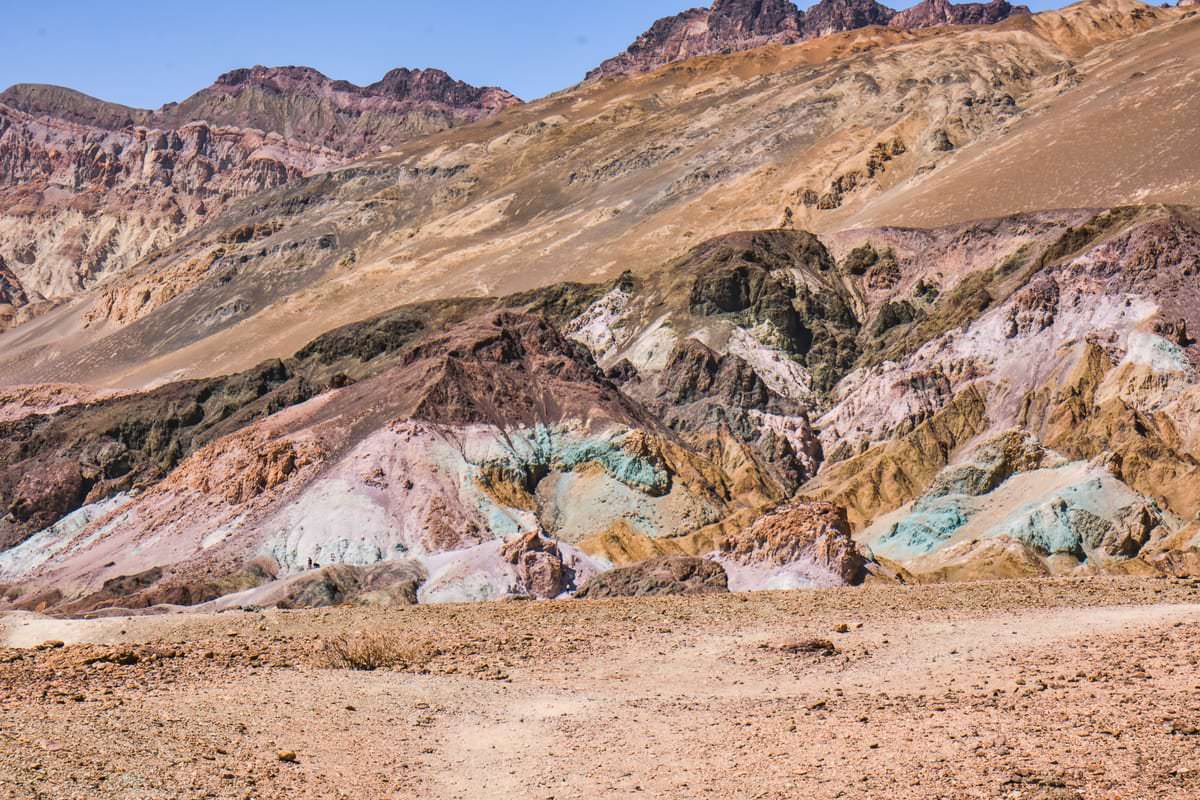
Anna, the Mom
After two days of lush vegetation and waterfalls in the Sequoia National Park and Yosemite National Park, we went for a one-day visit to Death Valley National Park. We went there several times before, when we lived in California.
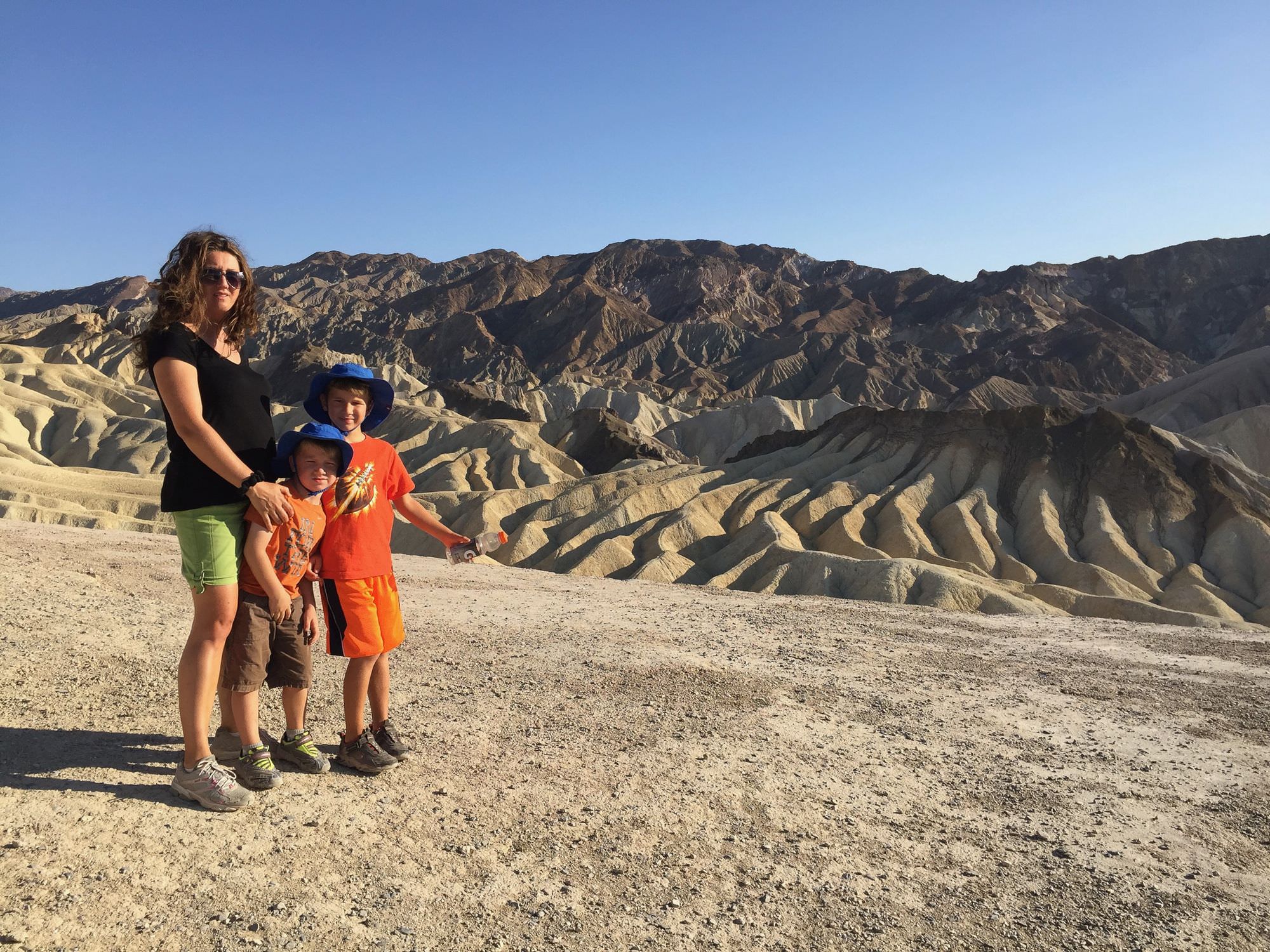
Death Valley National Park is a hot desert located on the California-Nevada border, east of the Sierra Nevada. It features mountains, bad-lands, dunes, canyons. One might think there is no life in there because it is so hot and dry, but it is not so. Rare rainstorms will reveal that underneath the hot gravel and sand there's life, there's potential.
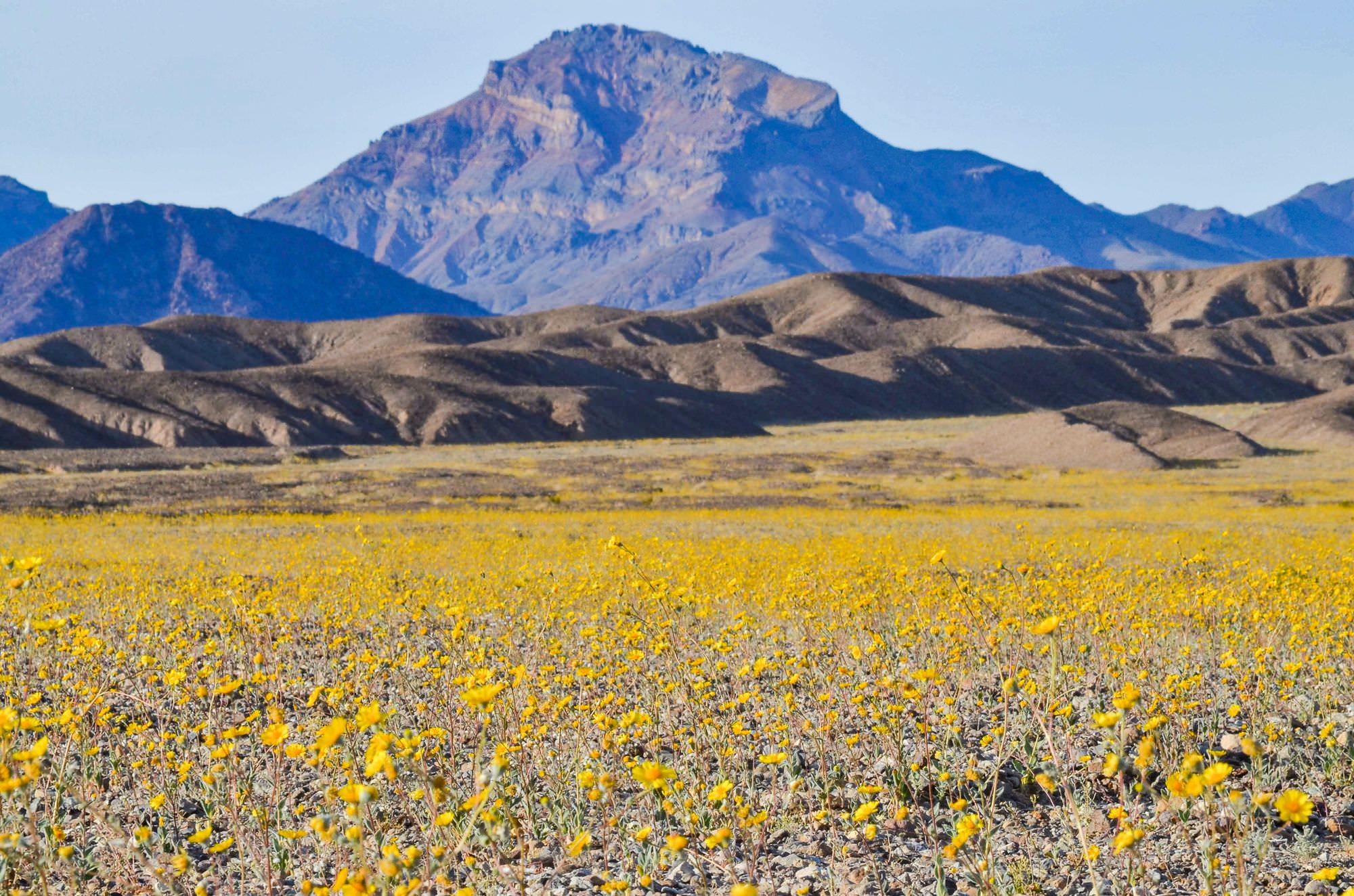
Death Valley has the reputation of being the hottest place in the United States of America, with temperatures daily reaching 120 degrees Fahrenheit (approx. 49 degrees Celsius) or greater, in the summer. The highest temperature recorded in Death Valley was 134 °F (approx. 57 degrees Celsius) in 1913, on the 10th of July. It is the highest ambient air temperature ever recorded at the surface of Earth.
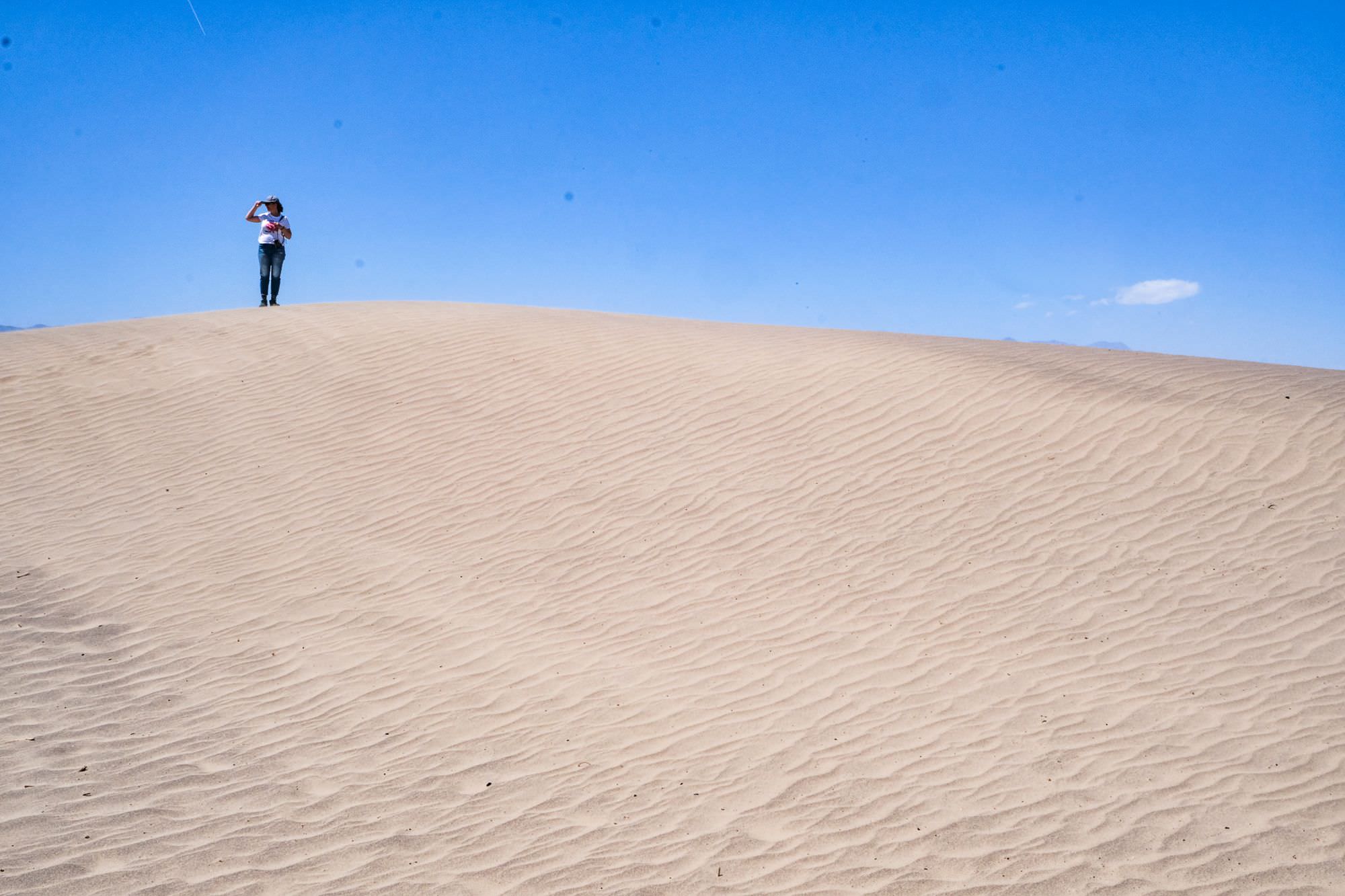
The transition from the tall green trees and lush forests of the Sequoia and Yosemite National Park to the empty and dry lands of the Death Valley always made me think of Psalm 23. The Lord, portrayed as a Shepherd, takes His flock, His people first to green pastures and still waters to refresh them and prepare them for the valley of the shadow of death. The Lord doesn't leave His people in the valley of the shadow of death, but is with them, leading them and comforting them. So, David being inspired, says:
Though I walk through the valley of the shadow of death, I will fear no evil; For You are with me.
I always pictured the valley of the shadow of death being like the Death Valley. The heat there is so oppressive, I always felt my eyes getting dry in my eye sockets from the heat, there. It is a weird feeling. It is like even the ability to cry is taken away from you.
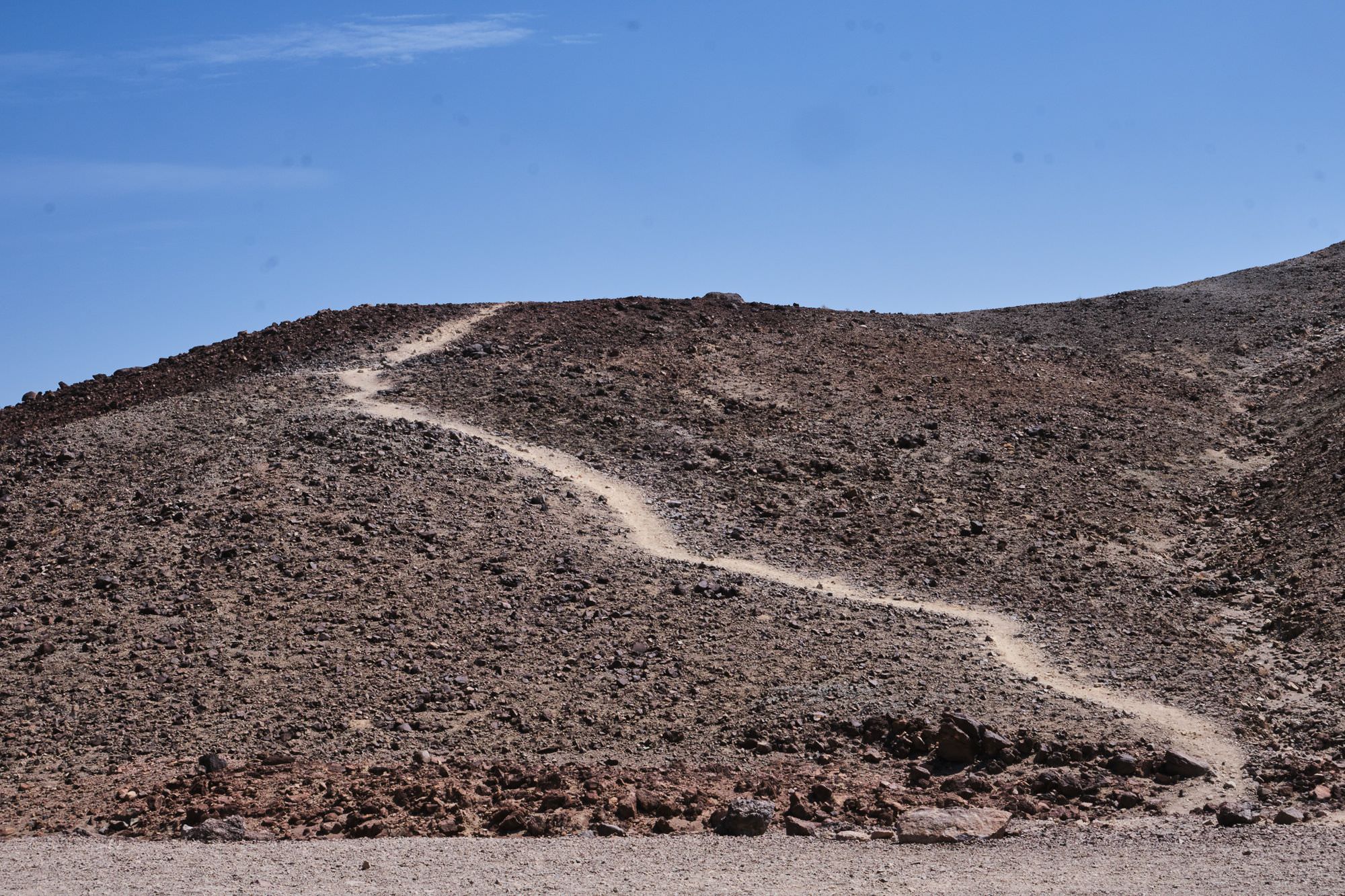
The mountains are stony, not even grass grows there, there isn't even soil on them. They are like humongous skeletons slumped on one side and left there to crumble with the passing of time.
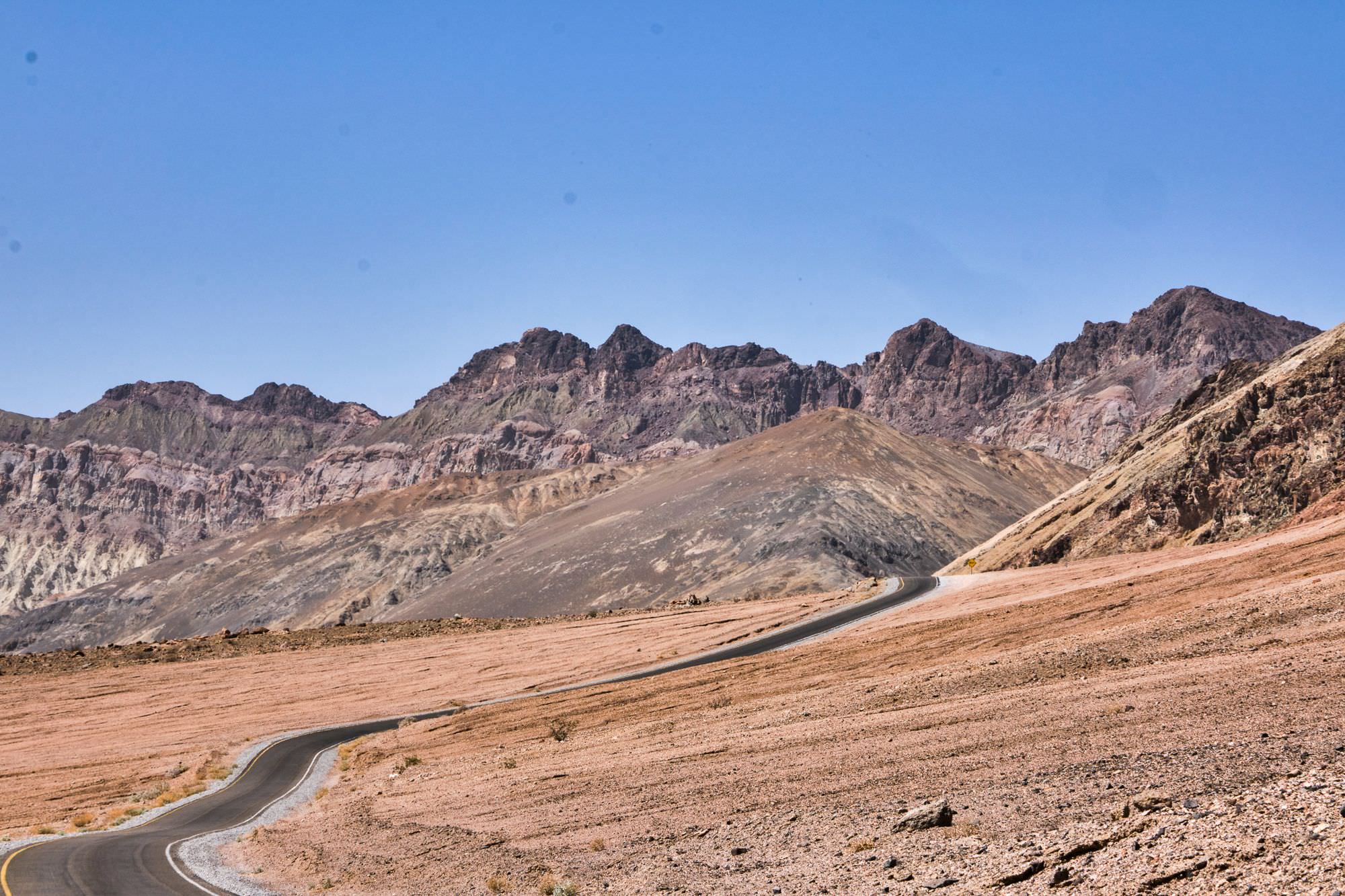
In a nutshell, it is the most depressing place I have been to and still, I don't say "no" every time we have a chance to go there. Why? I have no idea. I guess there is an attraction for such places where your worst fears could come true. To me, it is a picture of the worst place where you could end up, like the valley of the shadow of death.
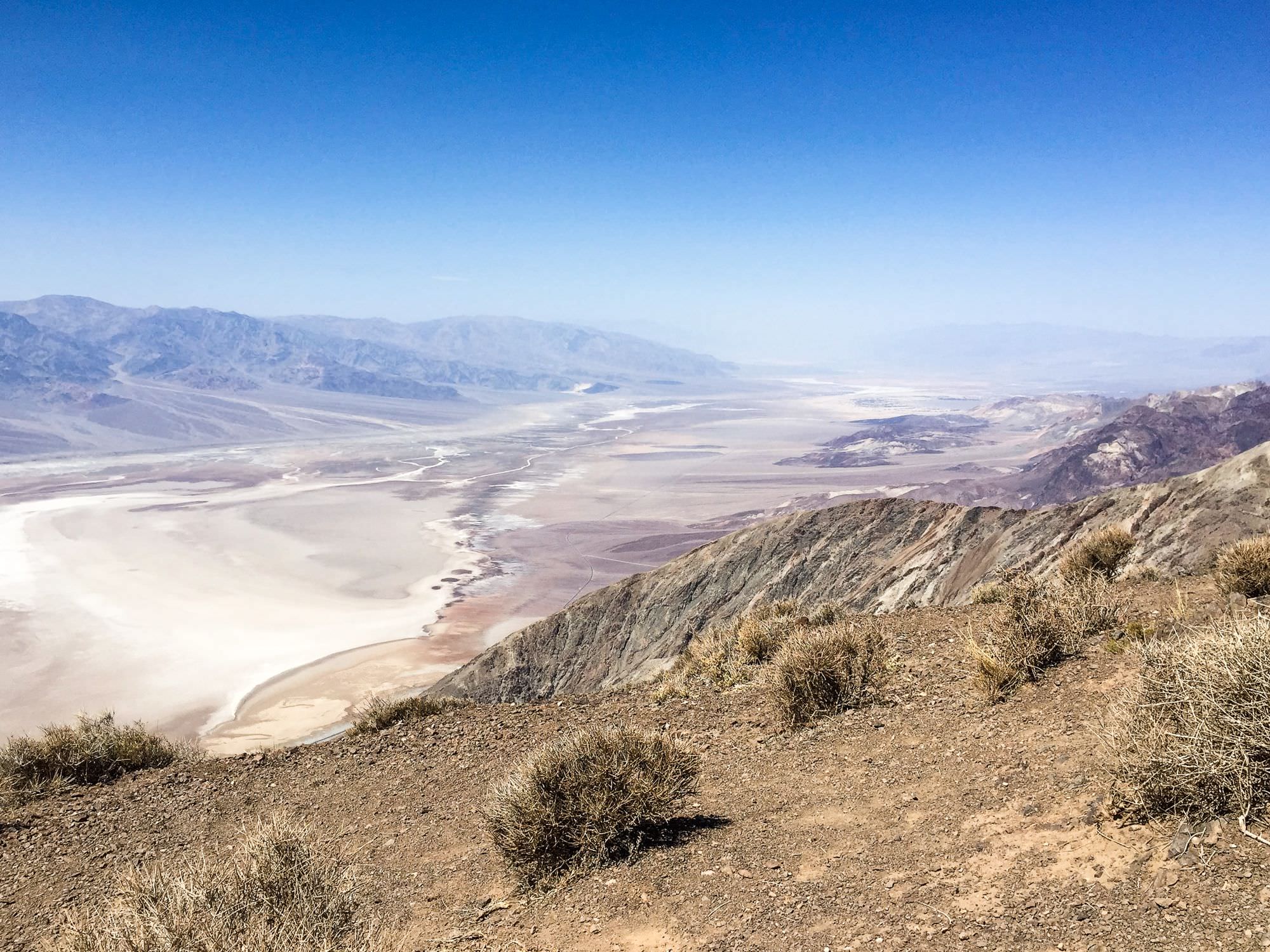
David wasn't afraid of the valley of the shadow of death because the Lord was with him in there, comforting him.
What if the Lord will take me to such places where I have to rely on Him for comfort? Then, I guess going to Death Valley for me is like practice for those kinds of times that might come. I go there to look death in the eyes and though I feel my eyes drying up in my eye sockets from the stare contest, I will not fear as long as the Lord is with me.
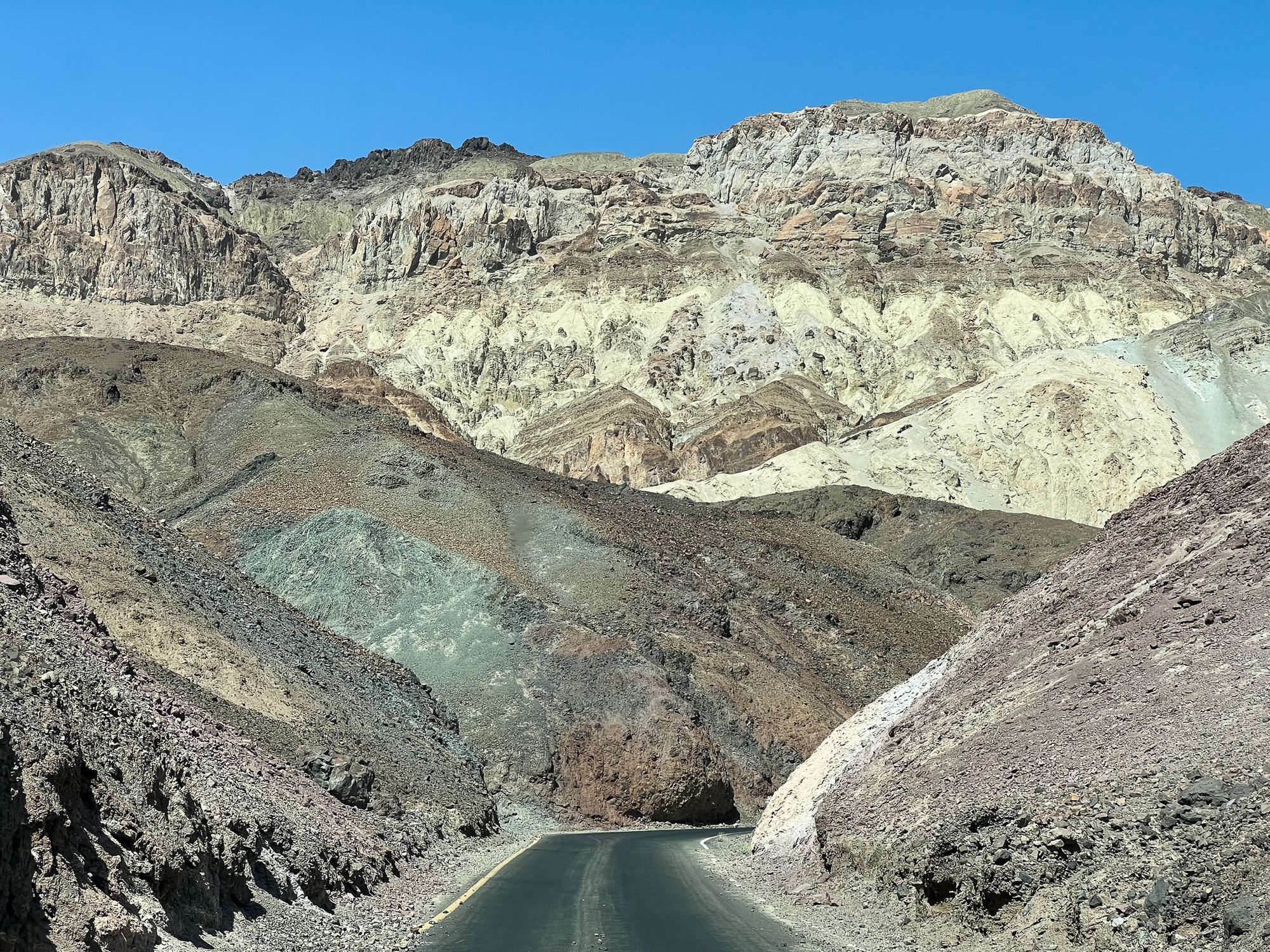
But it will be unfair of me to say that Death Valley National Park is all doom and gloom. In the past, it blew my mind to realize that it wasn't a dead place at all, there was life in it hidden under its scorched gravel and coarse sand. Life was hidden here, and it will spring out when given the opportunity. I love that, there is hope, even in the Death Valley.
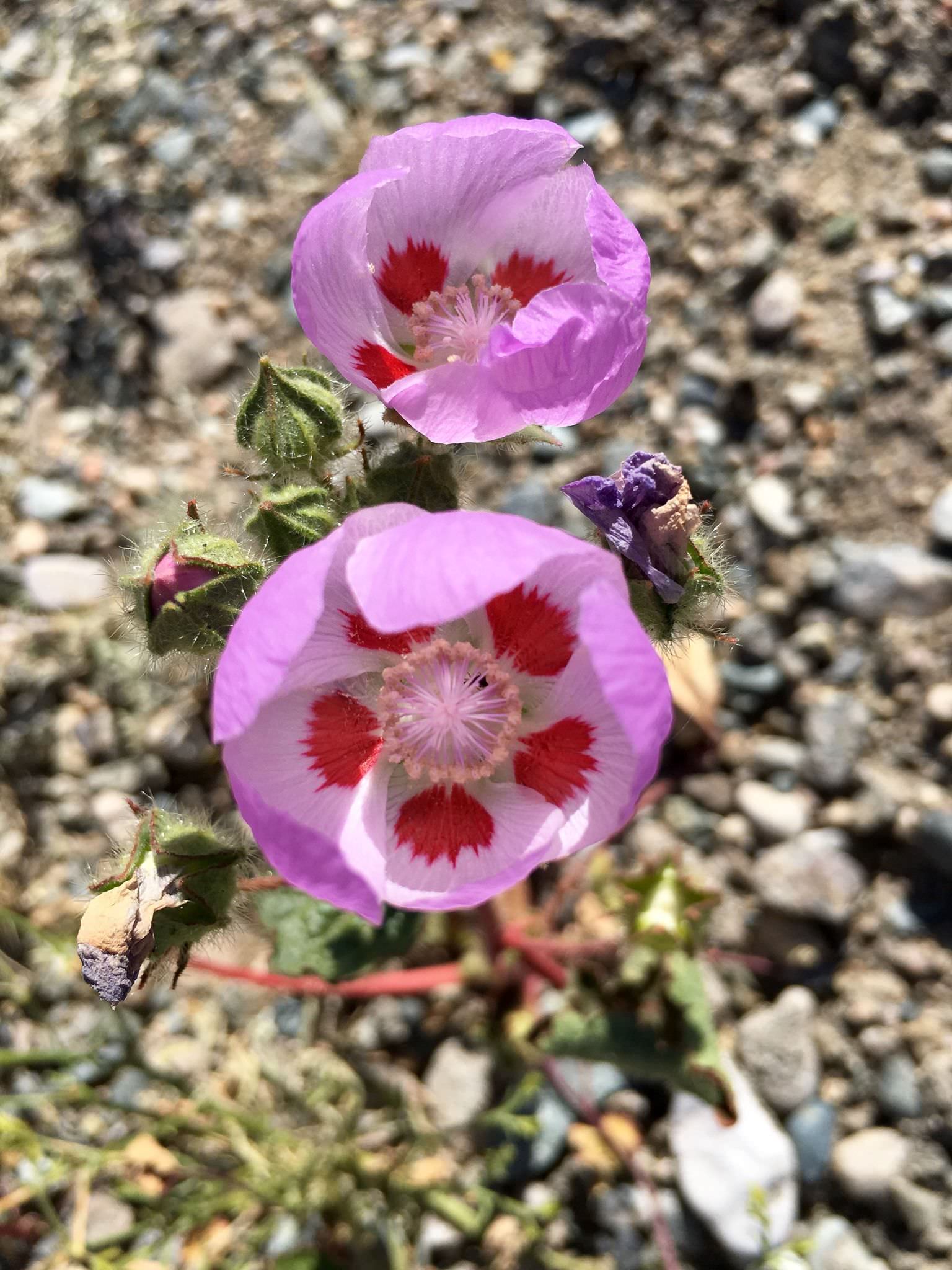
In our last visit to Death Valley, I discovered my favorite place there, called Artist's Drive. It is a 9-mile scenic drive through multicolored, eroded hills formed by the volcanic deposits of different compositions. Parts of Star Wars episode IV, A New Hope were filmed around the area of the Artist's Palette.
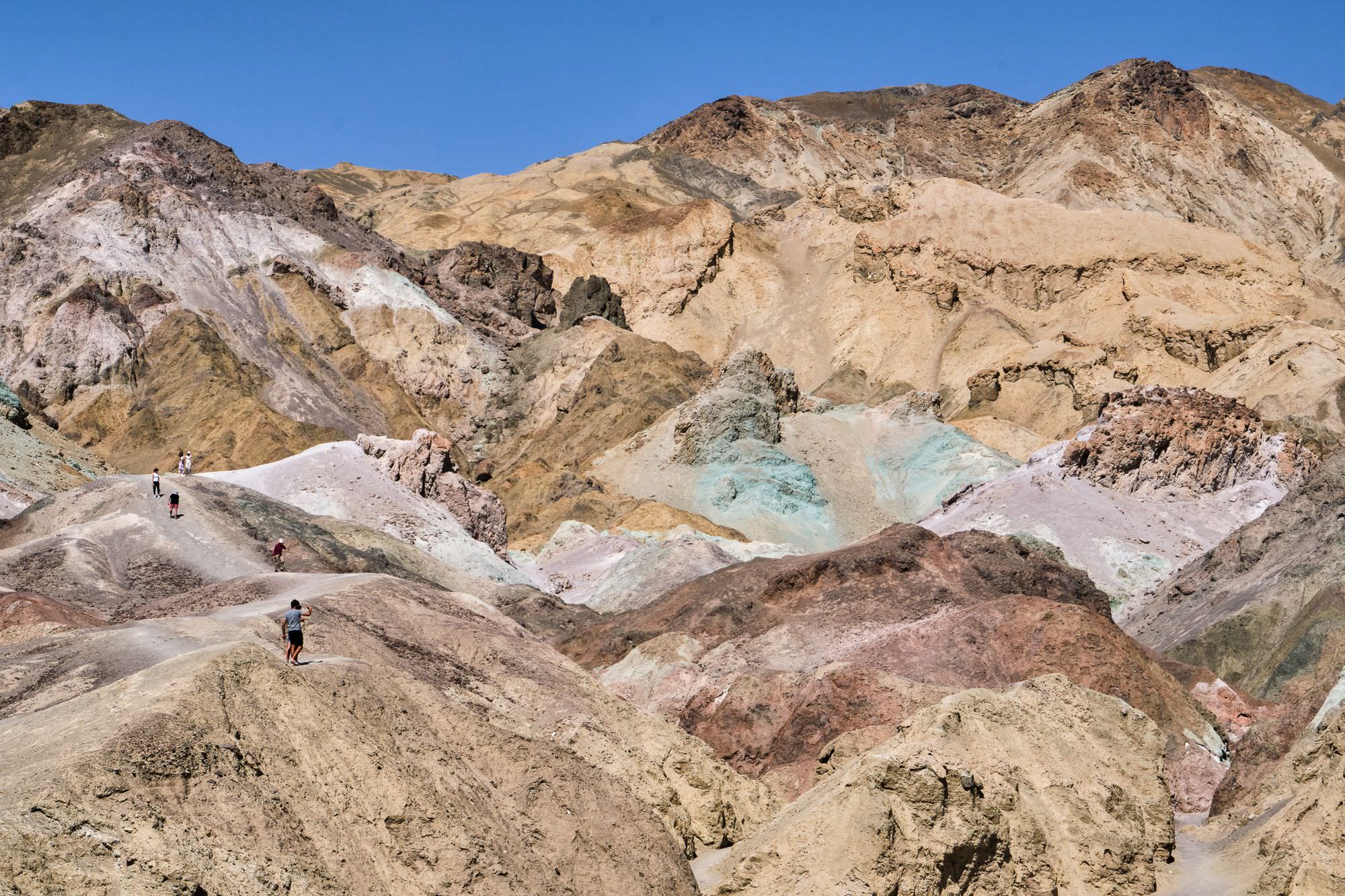
My second favorite was walking on the dunes of sand in Mesquite Flat. What is a desert without dunes? The name of these dunes comes from the Mesquite trees that thrive in this part of the Death Valley. The flour from the ground bean pods of these trees are used by the Shoshone as a traditional food.
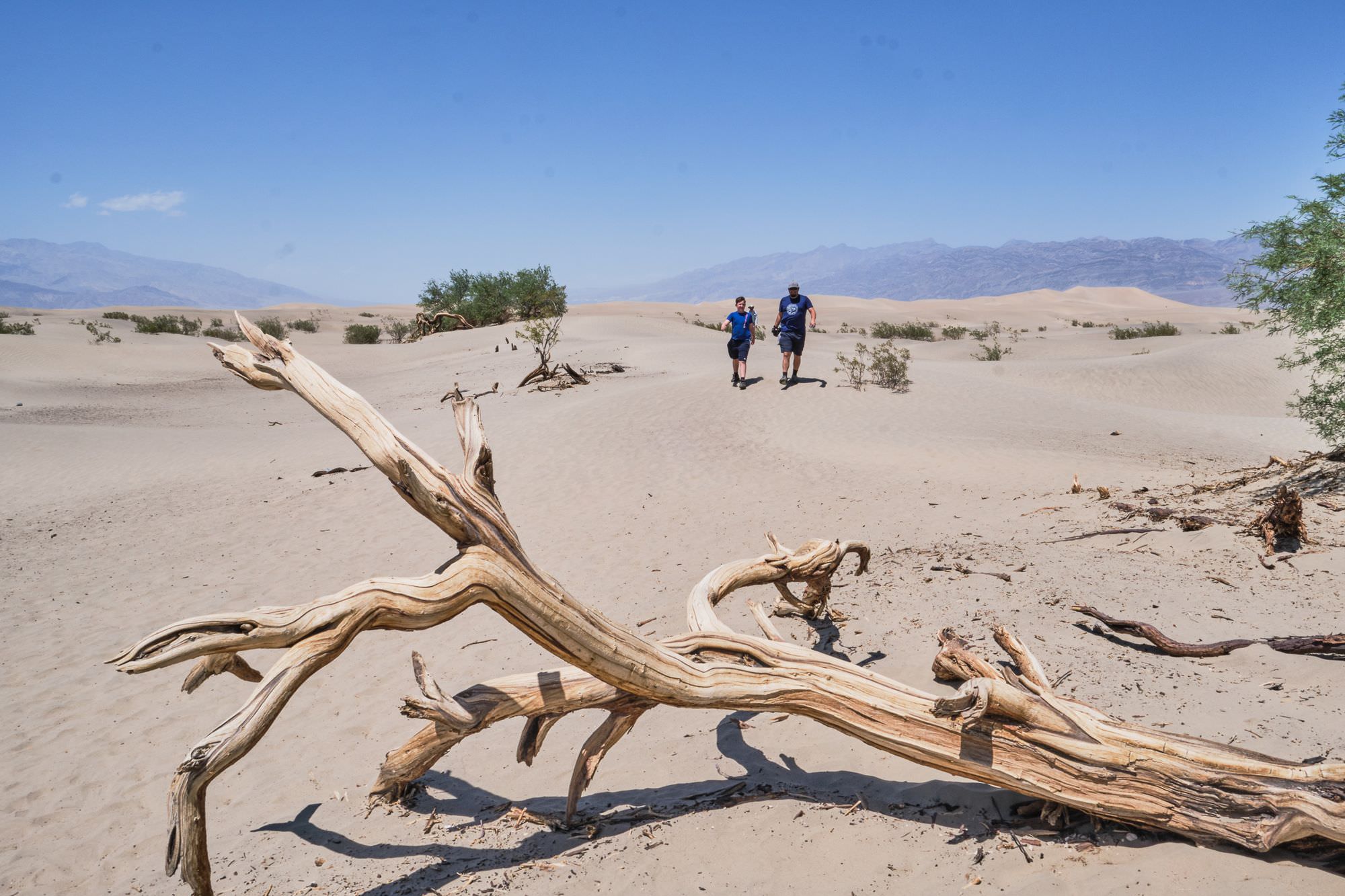
Another place we have never been to before and was interesting to walk through is the Golden Canyon. The name comes from the yellow color of the rock in the canyon. When we got there, it was very hot, so the boys decided to find shelter under a rock and wait for us to return to them. I was a bit disappointed that we could not go too far to explore this out of this world place. As little as we walked, we noticed that with every turn the landscape changed, the position of the rocks in the wall would look different.
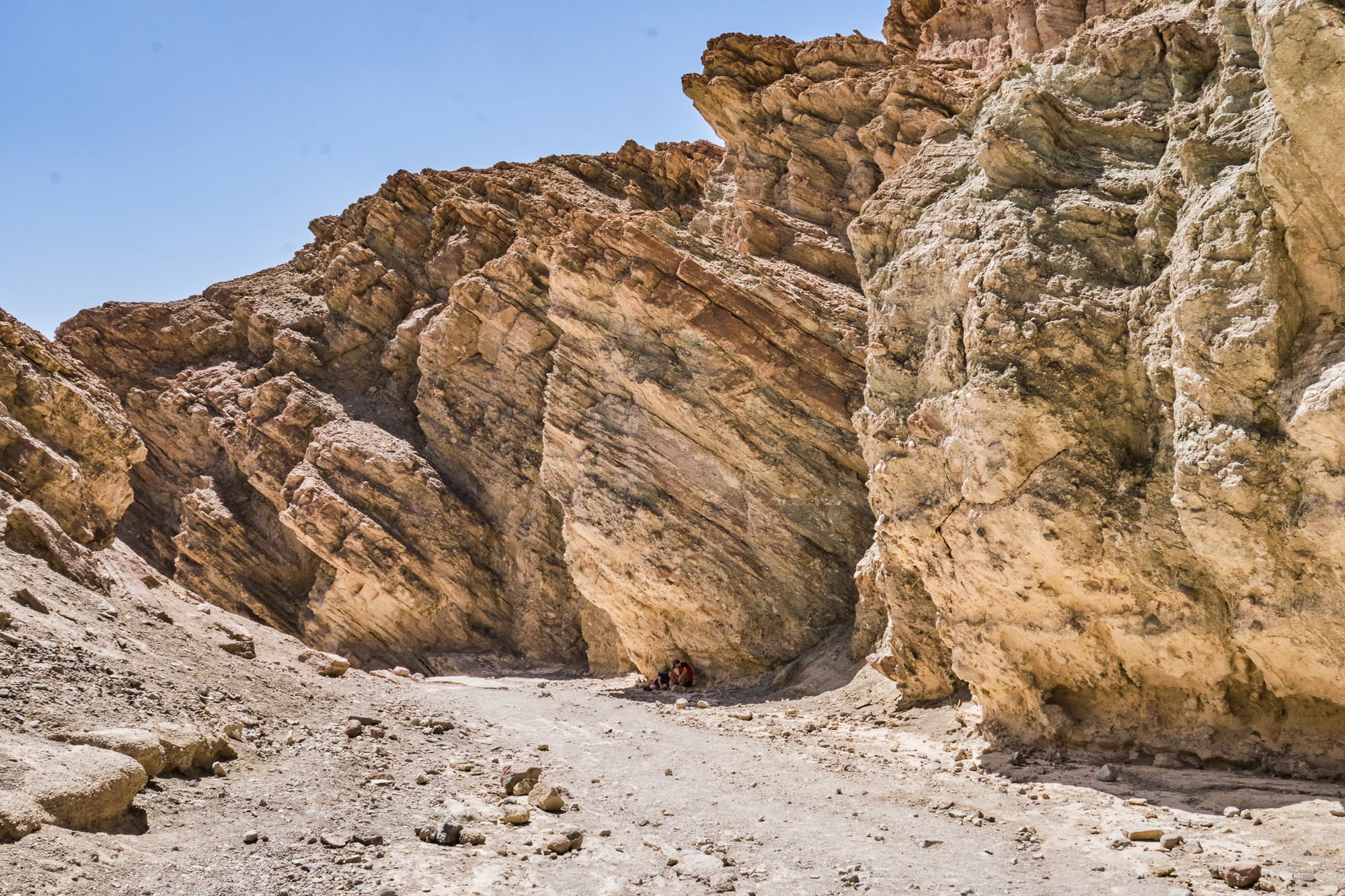
By the time we were going to our last stop in the park, the Zabriskie point, a wind started to blow fiercely, so we decided to skip it, since we have already seen it in one of our previous trips to Death Valley.
Mihai, 14
Death Valley National Park was founded as a national park in 1994. It is 3,373,063 acres (almost three times the size of Delaware) and contains the lowest and warmest point in North America, Furnace Creek, which is at 190 feet (ca. 58 meters) below sea level.
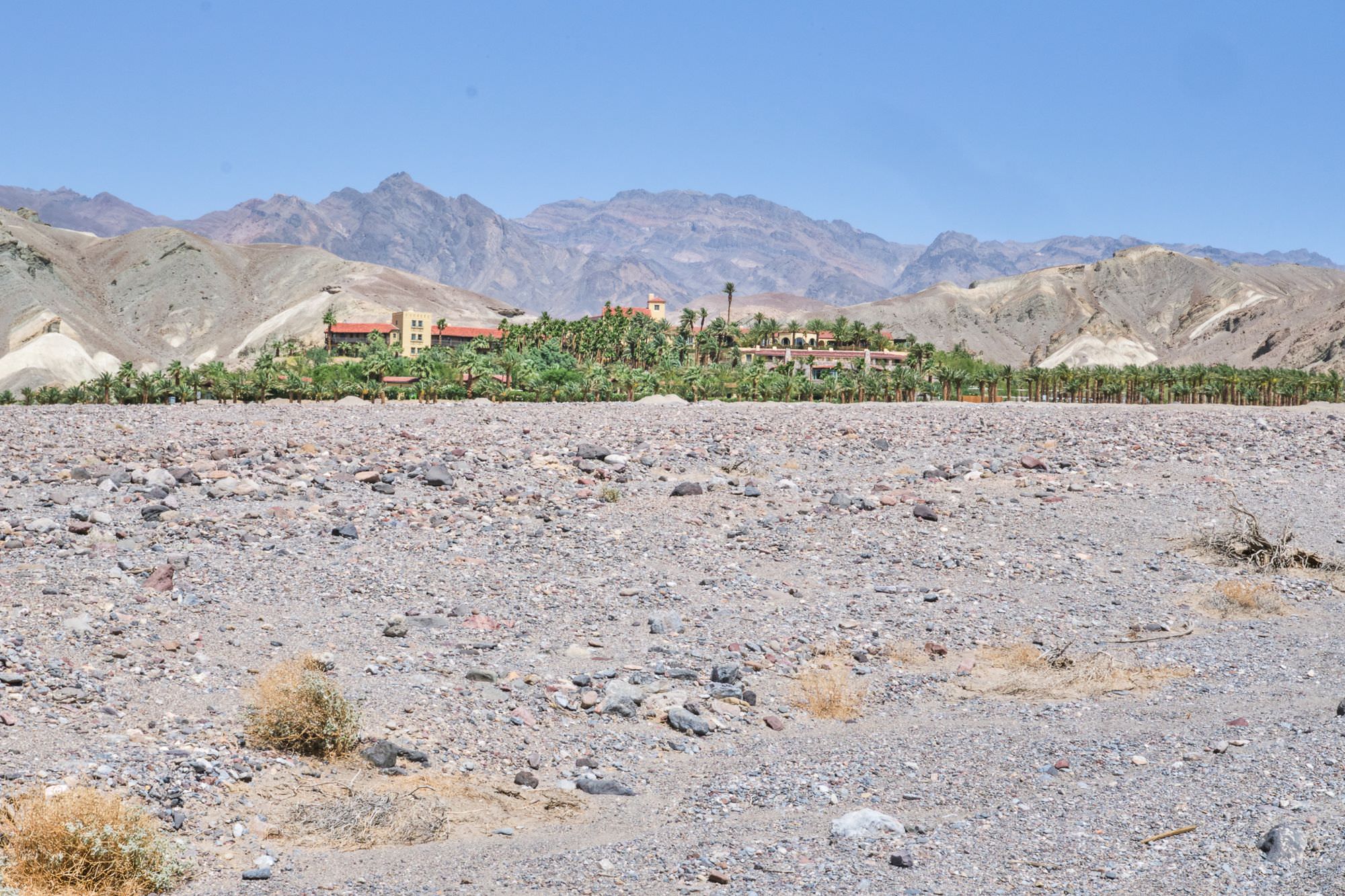
When we went to Death Valley, we first visited the Ballarat Ghost Town, which is an abandoned town around 2 miles (3.22 km) off the main road. It is accessed using an easy gravel path that takes around 15 minutes to cross. This ghost town is nowadays small, but it used to be much larger, housing 400-500 residents. It had seven saloons, three hotels, a Wells Fargo station, post office, school, and jail. Nowadays, there is only a jail and a trading post easily accessible.
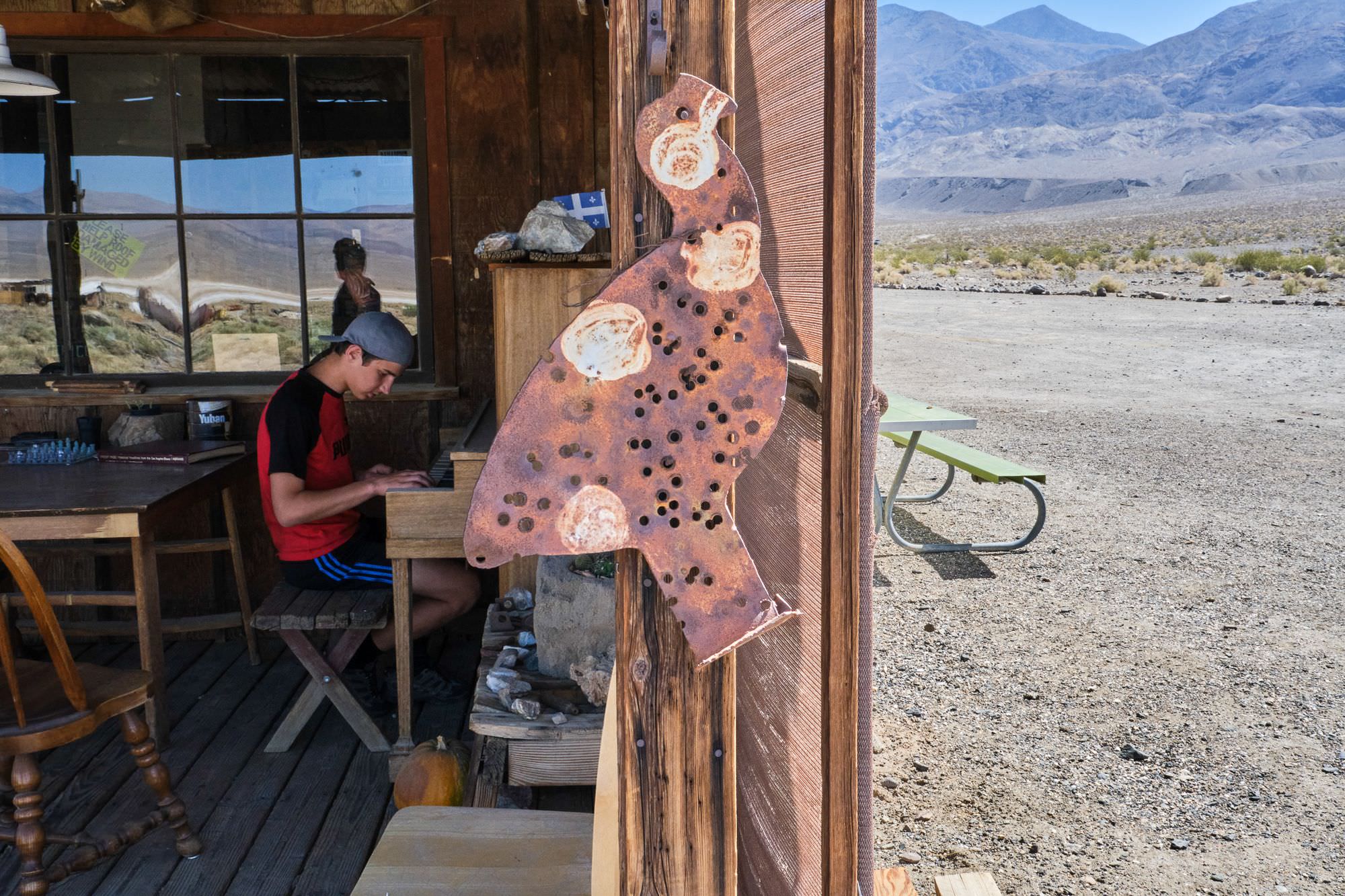
The trading post has an old piano outside, which we tried to play. However, the piano… didn't work properly. A more accurate description of that piano may be “broken”, or even “in shambles”. However, we didn't come here for the piano, we came to see the ghost town. In a field (no grass, just sand) nearby, we found an old bulldozer from the year 1932 which we climbed upon. This ancient relic was encrusted with sand and in a sad state of disrepair. Nearby, we spotted a burro, or a desert donkey.
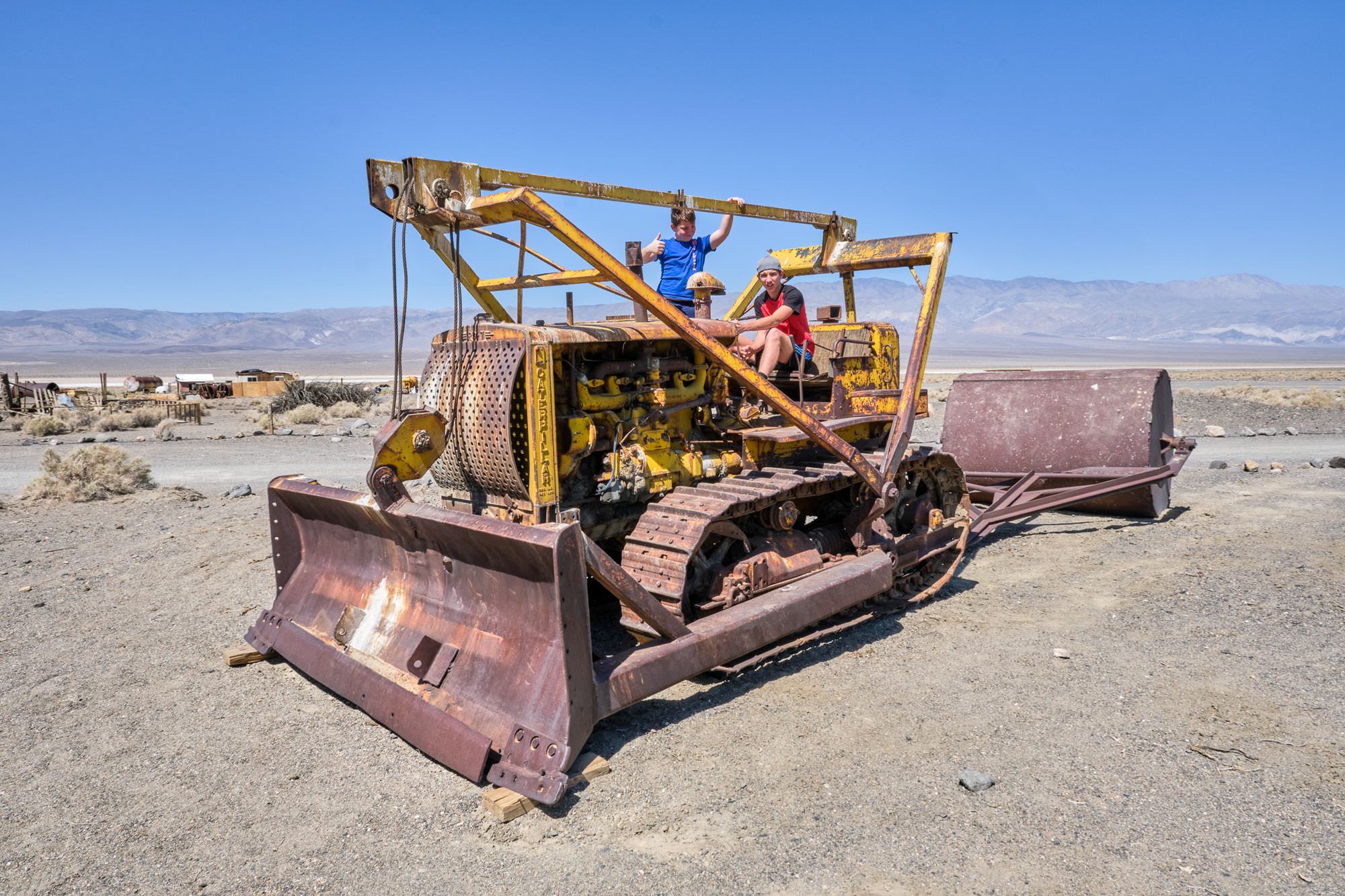
There, we also found a broken-down truck which I climbed into, and some more cars, like a souped-up sedan turned into a race car/dune buggy and a completely gutted station wagon. Next, we visited the jail, which didn't look too fashionable and had a triangle outside (presumably to call the one prisoner that fit in the jail outside).
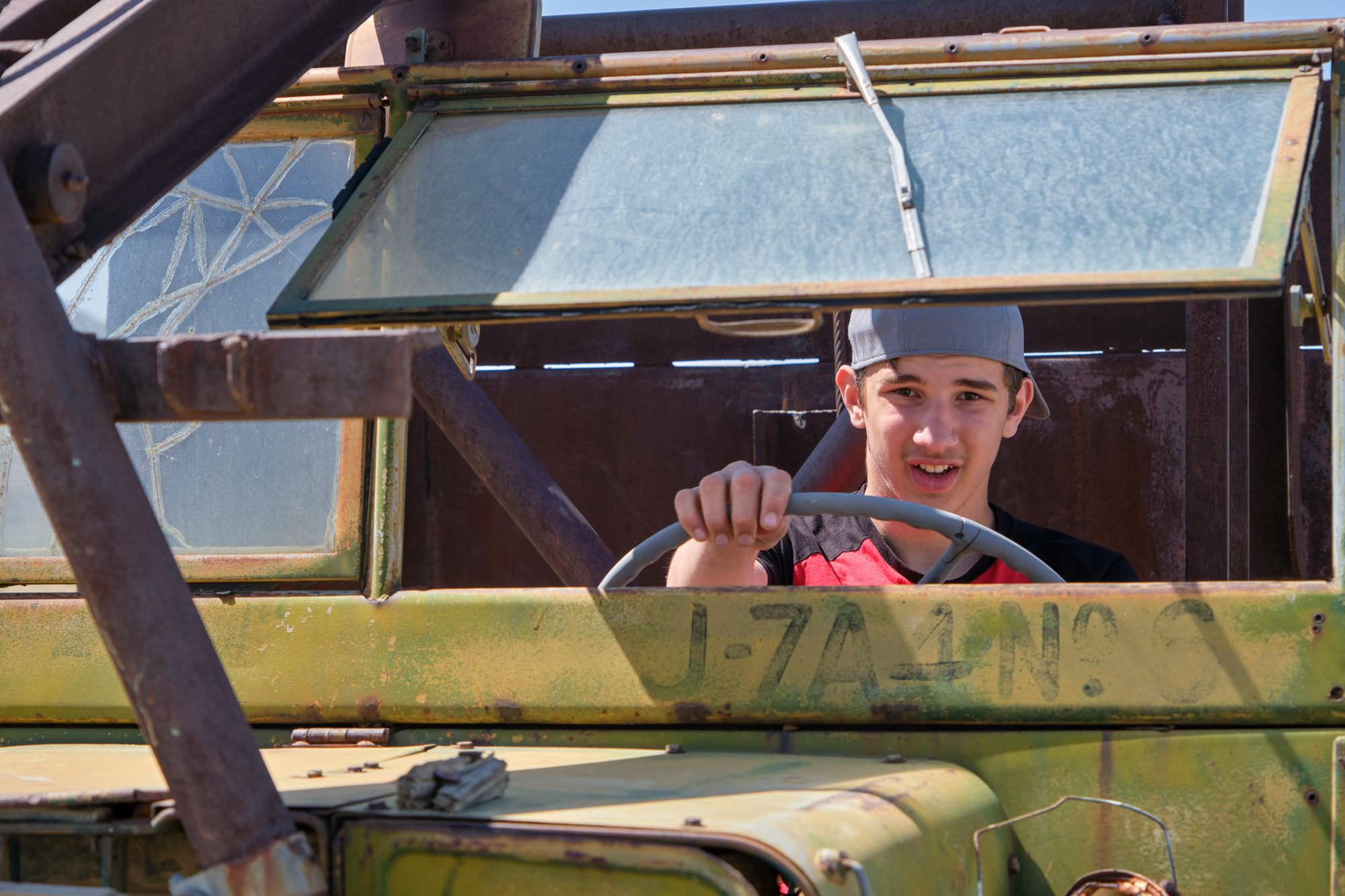
Later, we visited Artist's Drive, which is a paved path among some colored rock formations. The colors on these rock formations presumably change over time, because of rains and erosion, but I can't verify that because I haven't seen them change, so…
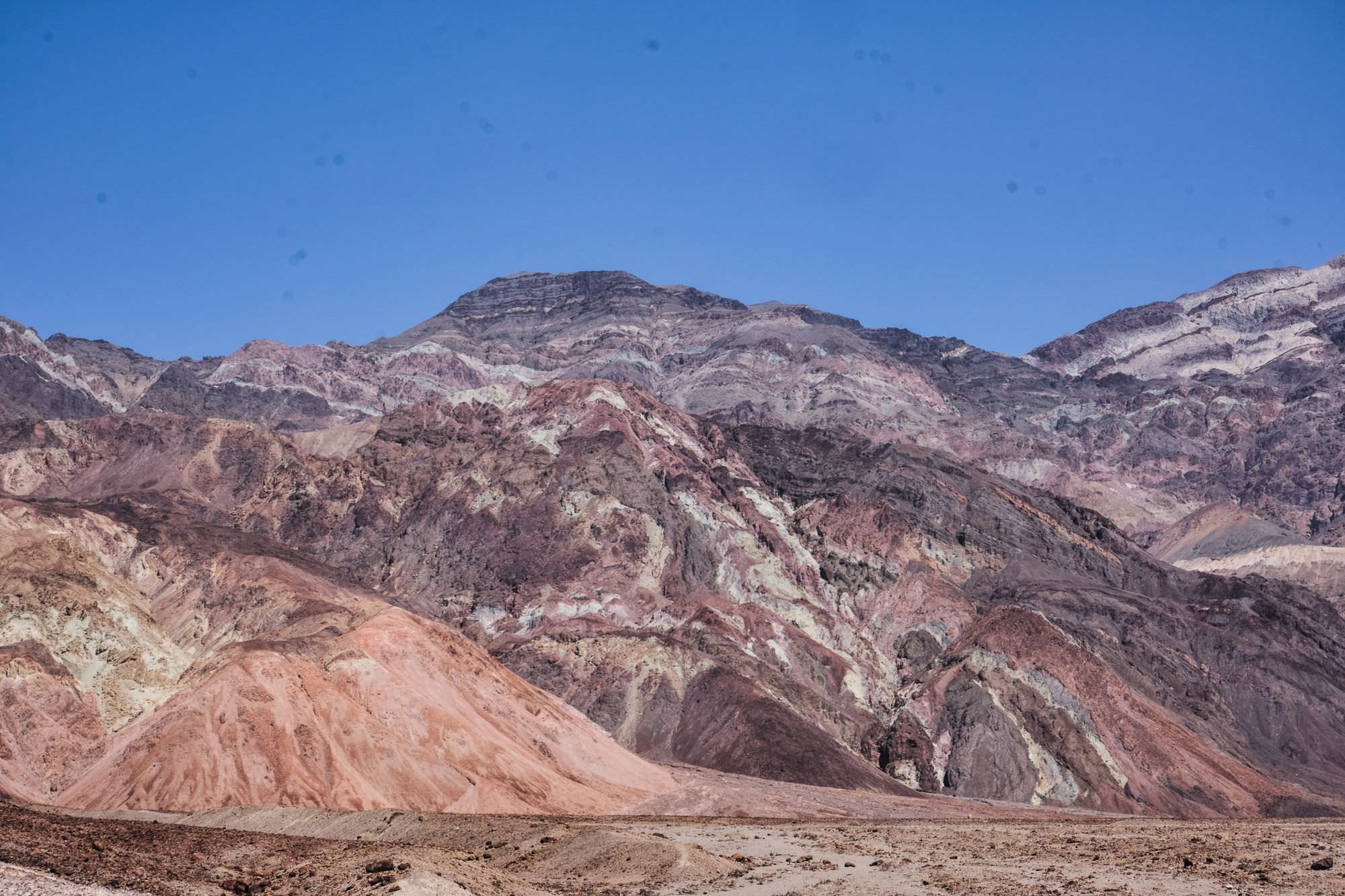
While visiting the rock formations, we decided that the name “Artist's Drive” didn't apply only to painters, but also to poets, so we started composing the most ridiculous rhymes we could think of.
We also hiked a bit in the Mesquite Flat Dunes. The dunes were very hot and hard to climb because of the ever-shifting sand. However, a few bushes and trees managed to grow on the dunes. Be sure to bring plenty of water because it is very hot here. Oh, and don't touch the ground… (don't tell me I didn't warn you!!!)
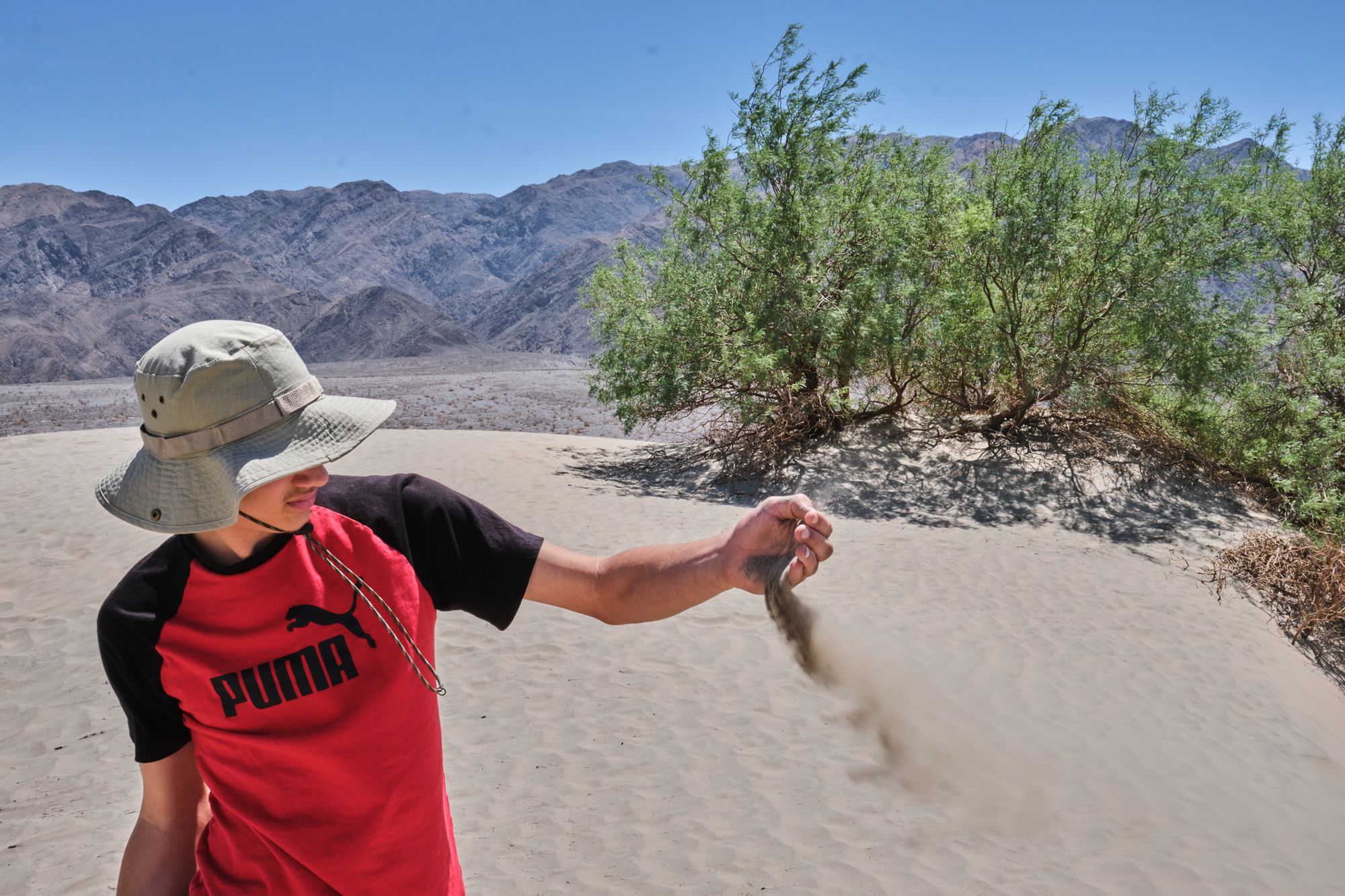
The Death Valley is a good place to go if you have plenty of spare time, a patience as long as the roads in the park, and LOTZ OF WATER. Notice the incorrect spelling, but it is on purpose to emphasize the amount of water you must bring.
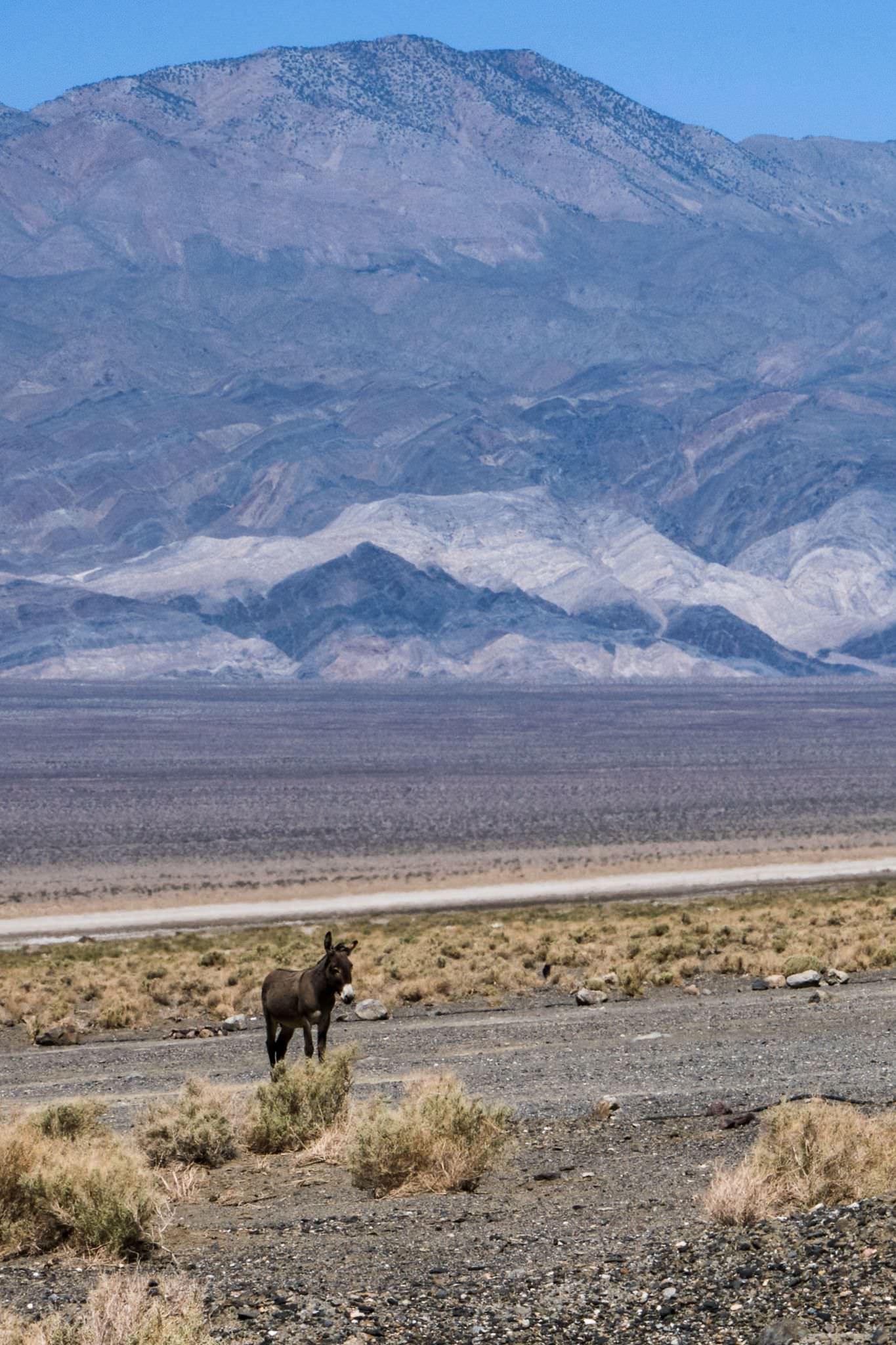
Death Valley is:
The worn-out abandoned bulldozer at Ballarat;
The dry sand shifting as I tried to walk on it;
The juicy burger I ate at Badwater Saloon;
The crunching of the tires on the gravel road leading to Ballarat;
The ludicrously expensive ($8/gallon) gas prices in the Valley Of Dry Fuel Tanks (a.k.a Death Valley).
I would go again to see Dante's Point, which we couldn't visit because of a sandstorm.
Paul, 11
My favorite stop at the Death Valley was Ballarat, a ghost town where there were many ruined old cars that littered the grounds. There was one thing that interested me the most – an old bulldozer from 1932 was just laying about in the nearby field. We climbed into it and checked it out, and saw that the engine was coated in mud, so we took the initiative and started cleaning it up. In the end, the finished product looked as good as new (not really, don't tell anyone…). Another interesting thing that we saw in the town was an old prison. Inside it were two cells in which there were old spring mattresses.
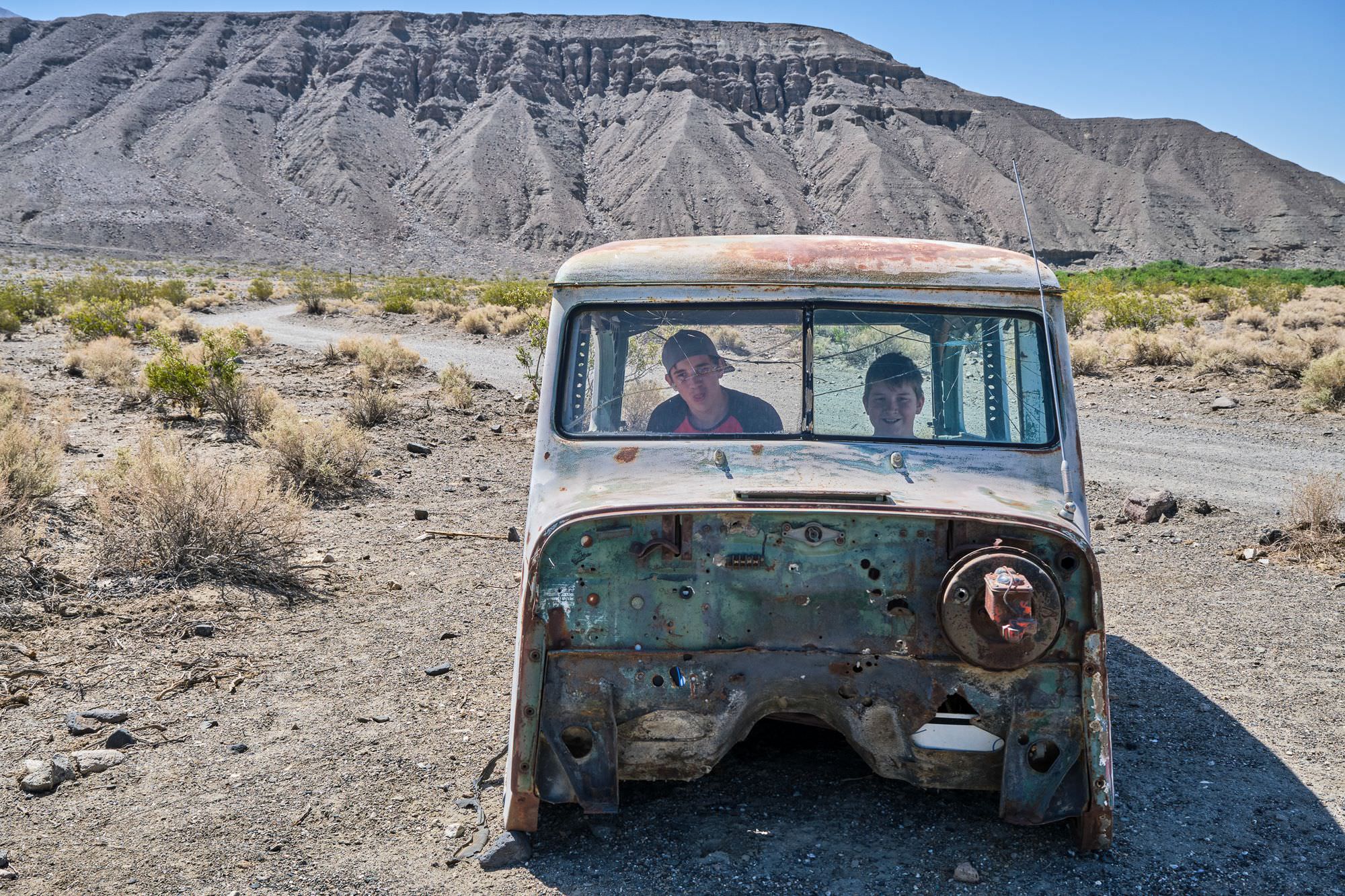
Another of my favorite stops at the Death Valley was Mesquite Flat Dunes. These giant hills of sand looked like waves in an ocean of sand, stuck forever in one single position. When we went there, the wind was whirling up a few whirlwinds and was tossing sand about. The grains of sand were moving so fast that they stung like the jabs of a scorpion. We tried finding shelter under a bush, but we were driven away by the sand biting our skin.
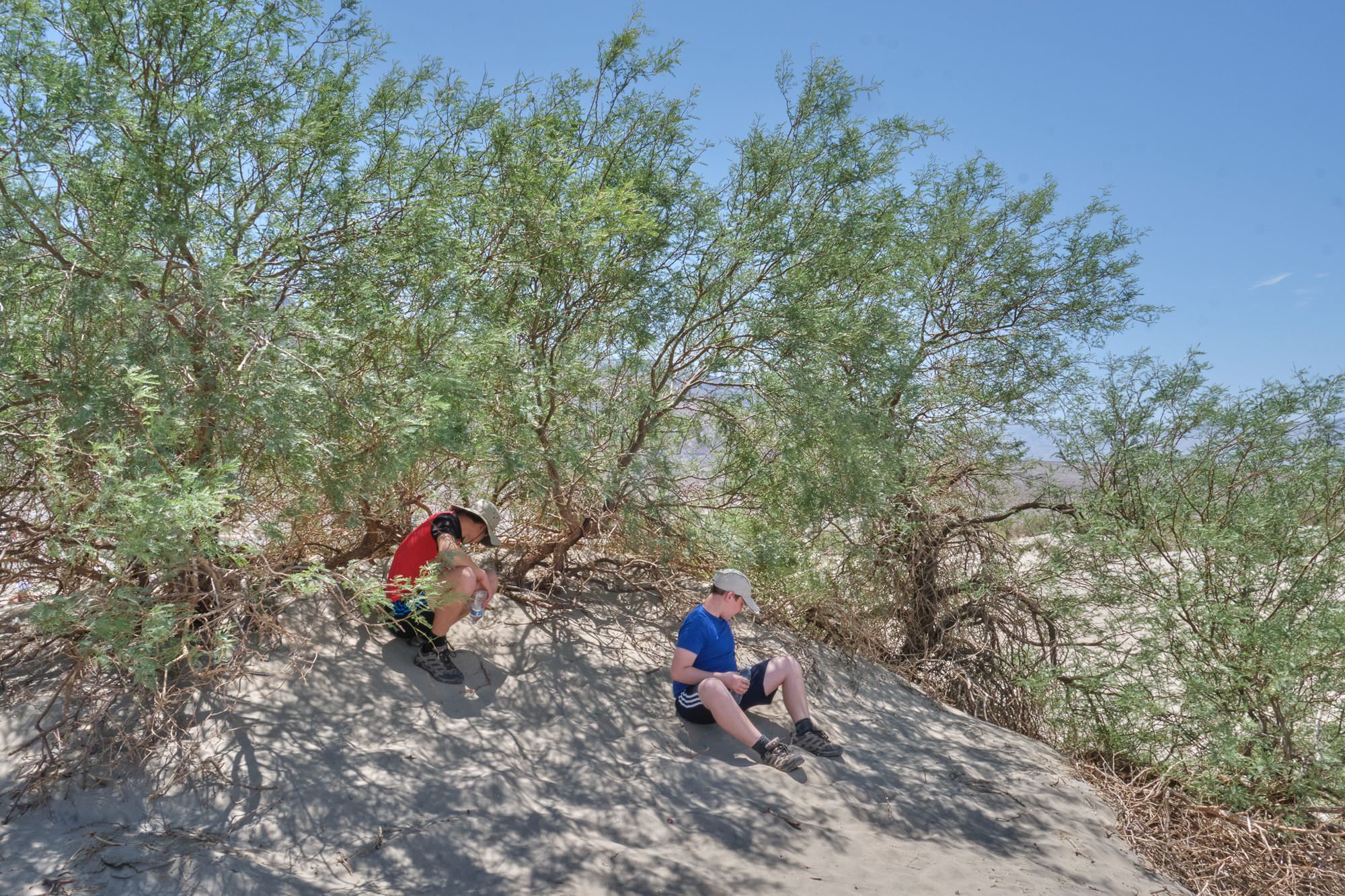
We also visited a small town in the park, where we ate at a western saloon styled restaurant which boasted giant sandwiches. At the gas station, the gas prices were 6.55 dollars per gallon.
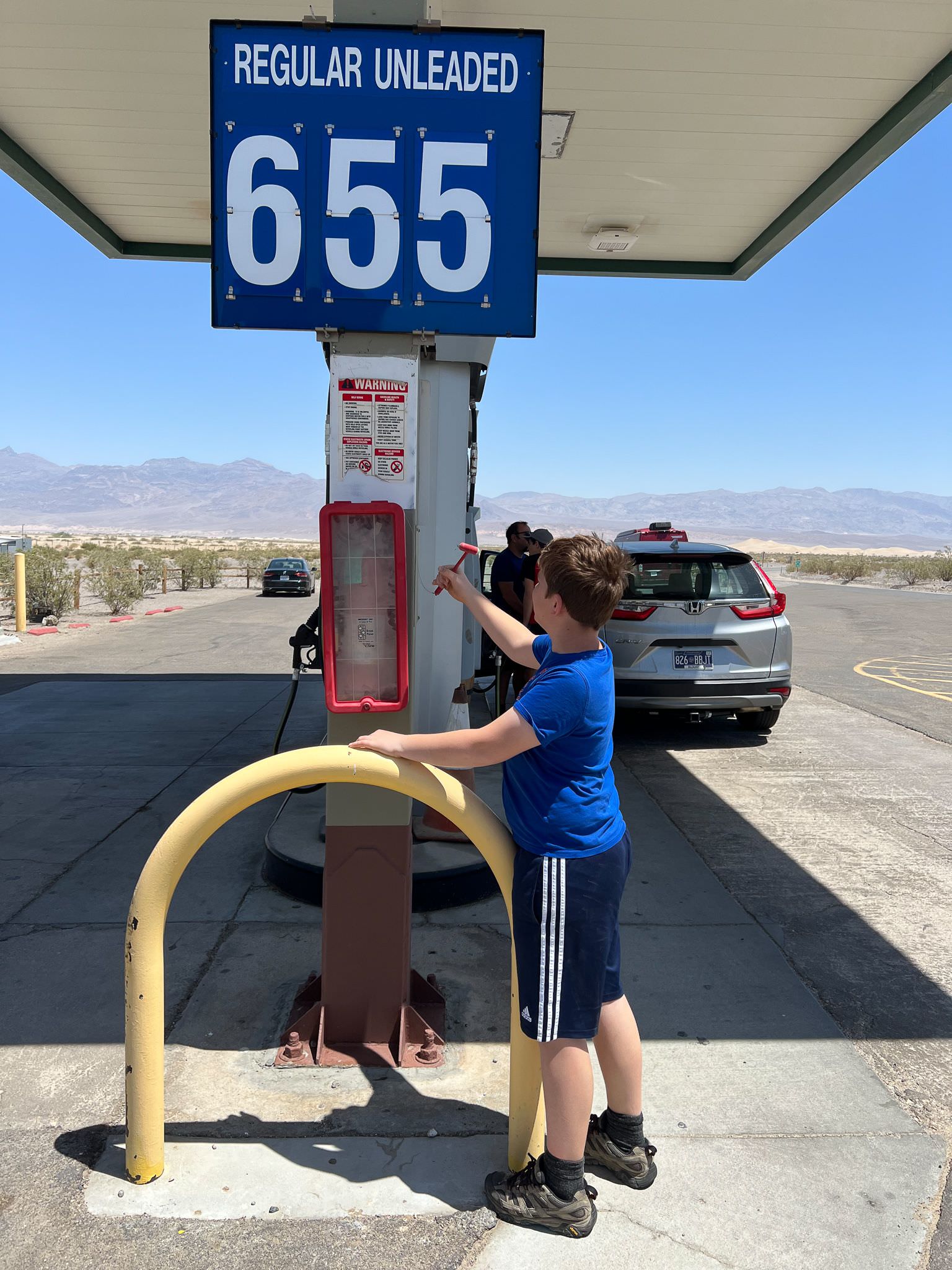
I would go again to visit the famous Dante's View, which we couldn't see because of weather problems (spots tornado in the distance).
Death Valley Was for Me
The meat in my burger oozing out fat;
The intolerable gas prices glaring at me through the hazy air;
The sand whipping through the wind;
A whirlwind dancing by our car;
The creaking of the old, rusty bulldozer;
The shaky keys of the piano creating haunting sounds in the wilderness.

